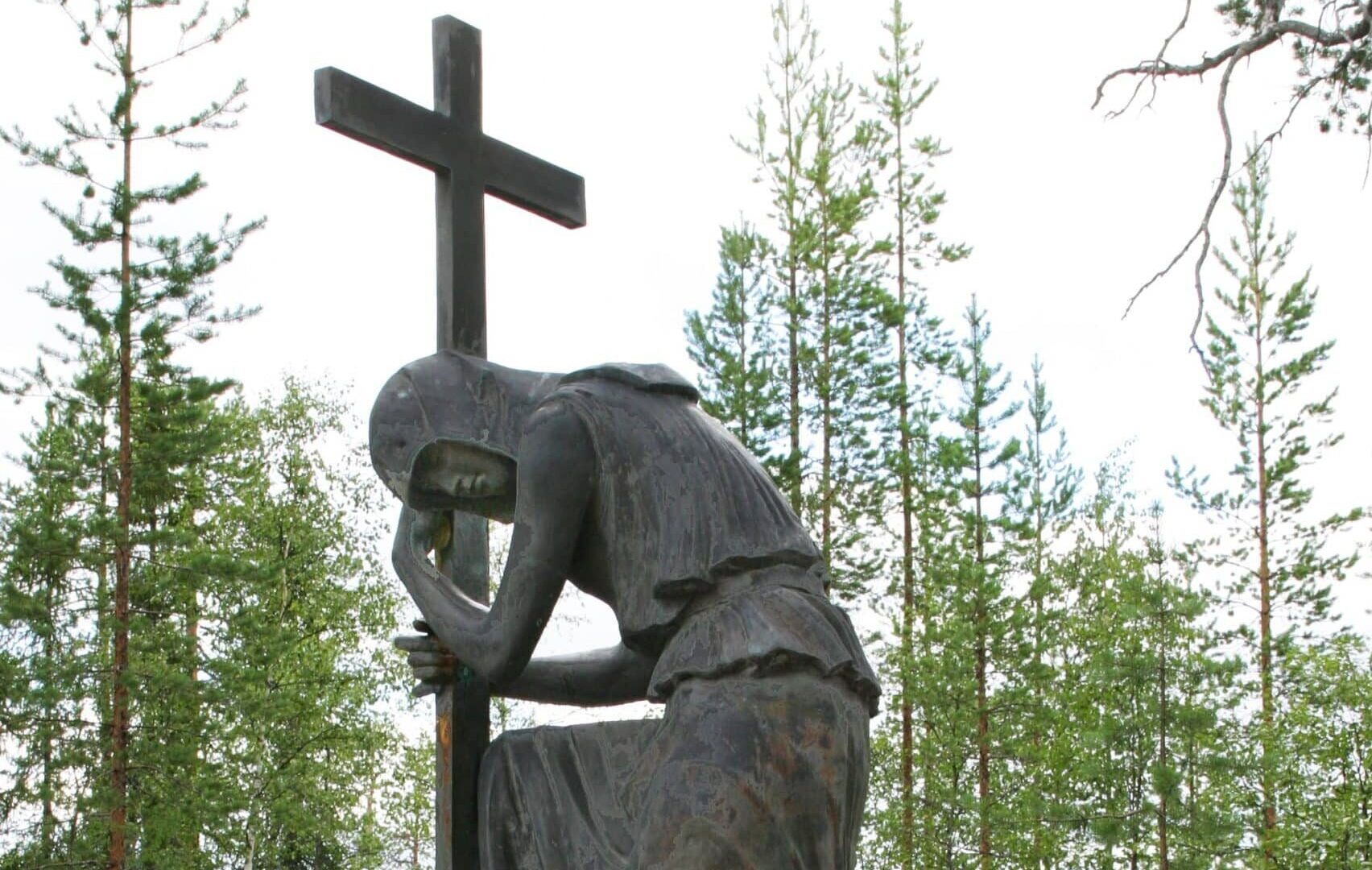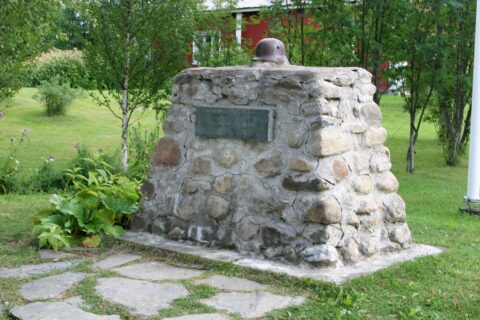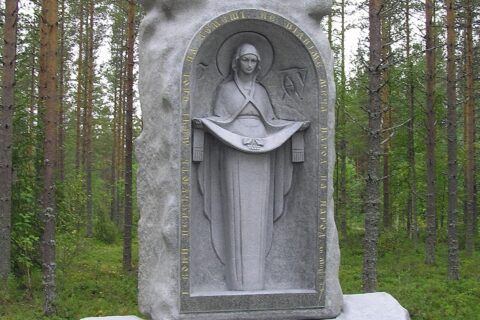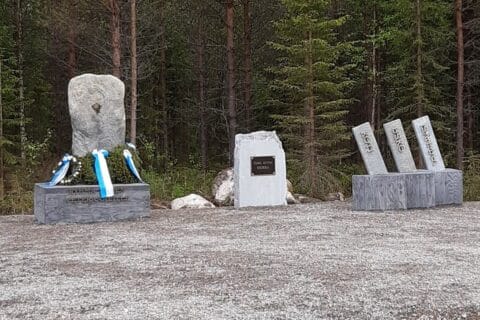Russian Memorial
The memorial statue designed by the artist Oleg Komov was raised on September 19, 1994. On the pedestal of the statue there is a text in Russian and in Finnish: “For the sons of the Fatherland – mourning Russia.” The monument is dedicated to the soldiers of the Red Army who fell in the Suomussalmi battles of the Winter War.
In Russia, the winter war and Raate road were not discussed openly until the turn of the 1980s and 1990s. As a sign of a new era, the memorial for the Russians who fell in the battles of Suomussalmi was unveiled on the Raate Road in September 1994. The memorial statue designed by artist Oleg Komov is dedicated to the soldiers of the Red Army who fell in the battles of Suomussalmi during the winter war.
Although times and ideas have changed, even today Finnish, Russian and Ukrainian views on the losses of the 44th Division differ considerably. In more recent Finnish historical writing, it is estimated that at least 7,000–9,000 enemy soldiers were left in Raate Road. According to the Russian Juri Kilin, the losses of the 44th Division were not as great as is usually reported in Finnish historiography. According to the commission of inquiry ordered by the Stavka in January 1940, the total losses of the 44th Division were 4674 men, of which 1001 were killed, 1430 were wounded and 2243 were missing. At the turn of the year, the strength of the division was 13,962 men, and at the end of the Battle of Raate 9288 men. The original lower than usual combat strength is explained by the fact that the two battalions of the 305th Infantry Regiment were elsewhere. According to Kilin, men still returned to their side after Stavka’s investigation was completed, which reduced the number of those who disappeared.
According to Stavka’s research commission, the 25th Infantry Regiment that was killed in Haukila experienced the worst fate. The original strength of the regiment was 3296 men, of which only 1265 returned to the Soviet Union. The total loss was 2031 men, of which 1551 were reported missing.
Based on the same sources, the Ukrainian Oleg Bozhko comes to almost identical numbers with Kilin in his own research. According to Bozhko, on January 1, 1940, the strength of the 44th Division was 14,003 men. In the battles of January, the division lost a total of 4756 men, of which 1001 fell, 1430 were wounded, 2243 were missing and 82 were frozen to death. According to his information, individual missing soldiers returned to the Soviet Union at the end of January.
As for the Raate Road, Russian and Ukrainian historiography still seems to rely largely on documents that were created as a result of the work of the research commission ordered by the Stavka in January 1940. The Stavka’s statistics about the fallen can be regarded with at least as much reservation as the assessments made by the Finns during the Winter War.
When estimating the total number of those who fell on the road to Raate, it should be noted that the starting point for the statistics of the Stavka Research Commission is the strength of the 44th Division on January 1, 1940, by which time the Ukrainians had already suffered considerable losses for two weeks. In addition, Stavka’s statistics lack information about other units that operated on the Raatee Road besides the 44th Division.
In summary, it can be stated that the true number of Red Army soldiers who fell on the road to Raate will hardly ever be found out. All the figures presented in the Finnish, Russian and Ukrainian studies are to some extent based on estimates made in 1940 in the middle of the war and propaganda battle. The Finns were happy to tell about the complete destruction of the 44th Division, which Soviet propaganda of course tried to refute.
Over the years, there has been heated discussion on the topic on various forums, but it is not important in terms of the historical outcome of the battle: Raate Road was the Finns’ most spectacular victory in the winter war.



